In an app running Framework 4.72, not .NET Core, I'm trying to inject a SignalR IHubContext into a Web API 2.x service. I have my solution broken into three projects, web, service, data. The SignalR hub is in the web layer. I have background code that runs in the service layer and when complete I need it to send a mesage via the hub. This background task is not initiated by the controller.
My Global.asax is pretty standard:
protected void Application_Start()
{
GlobalConfiguration.Configure(WebApiConfig.Register);
// Set JSON serializer to use camelCase
var json = GlobalConfiguration.Configuration.Formatters.JsonFormatter;
json.SerializerSettings.ContractResolver = new CamelCasePropertyNamesContractResolver();
DIConfig.Setup();
FilterConfig.RegisterGlobalFilters(GlobalFilters.Filters);
var logConfigFilePath = Server.MapPath("~/log4net.config");
log4net.Config.XmlConfigurator.ConfigureAndWatch(new System.IO.FileInfo(logConfigFilePath));
}
My DIConfig contains:
internal static void Setup()
{
var config = System.Web.Http.GlobalConfiguration.Configuration;
var builder = new ContainerBuilder();
builder.Register(c => new ShopAPDbContext()).AsImplementedInterfaces().InstancePerBackgroundJob().InstancePerLifetimeScope();
builder.RegisterType<ShopAPRepository>().As<IShopAPRepository>().InstancePerBackgroundJob().InstancePerLifetimeScope();
builder.RegisterType<ShopAPService>().As<IShopAPService>().InstancePerBackgroundJob().InstancePerLifetimeScope();
builder.AddAutoMapper(typeof(InvoiceMappingProfile).Assembly);
builder.RegisterApiControllers(Assembly.GetExecutingAssembly());
var container = builder.Build();
DependencyResolver.SetResolver(new AutofacDependencyResolver(container));
config.DependencyResolver = new AutofacWebApiDependencyResolver(container);
Hangfire.GlobalConfiguration.Configuration.UseAutofacActivator(container);
}
And my Startup.cs:
public class Startup
{
public void Configuration(IAppBuilder app)
{
var container = DependencyConfiguration.Configure(app);
SignalRConfiguration.Configure(app, container);
HangFireDashboardConfig.Configure(app);
}
}
public static class DependencyConfiguration
{
public static IContainer Configure(IAppBuilder app)
{
var builder = new ContainerBuilder();
builder.RegisterHubs(typeof(SignalRConfiguration).Assembly);
var container = builder.Build();
app.UseAutofacMiddleware(container);
return container;
}
}
public static class SignalRConfiguration
{
public static void Configure(IAppBuilder app, IContainer container)
{
HubConfiguration config = new HubConfiguration();
config.Resolver = new AutofacDependencyResolver(container);
app.Map("/messages", map =>
{
map.UseCors(CorsOptions.AllowAll);
var hubConfiguration = new HubConfiguration
{
EnableDetailedErrors = true,
EnableJavaScriptProxies = false
};
map.RunSignalR(hubConfiguration);
});
}
}
The constructors of my service layer look like this:
public ShopAPService()
{
_shopAPRepository = new ShopAPRepository();
_mapper = new Mapper((IConfigurationProvider)typeof(InvoiceMappingProfile).Assembly);
_hubContext = null; // what here?
}
public ShopAPService(IShopAPRepository shopAPRepository, IMapper mapper, IHubContext hubContext)
{
_shopAPRepository = shopAPRepository;
_mapper = mapper;
_hubContext = hubContext;
}
I know I need to pass an instance of the IHubContext into the service but so far I haven't been succesful. As I know, the first constructor is what is used when the service is called from anything other than the controller?
FIRST REVISION
Ok, I understand that everything should go into a single container. Based on feedback and looking at those links, I create a container and pass that along. Here is my revised Startup:
public class Startup
{
public void Configuration(IAppBuilder app)
{
//var config = System.Web.Http.GlobalConfiguration.Configuration;
var container = GetDependencyContainer();
RegisterWebApi(app, container);
RegisterSignalR(app, container);
GlobalHost.DependencyResolver = new AutofacDependencyResolver(container);
HubConfiguration config = new HubConfiguration();
config.Resolver = new AutofacDependencyResolver(container);
//config.DependencyResolver = new AutofacWebApiDependencyResolver(container);
Hangfire.GlobalConfiguration.Configuration.UseAutofacActivator(container);
HangFireDashboardConfig.Configure(app);
}
private IContainer GetDependencyContainer()
{
return AutofacConfig.RegisterModules();
}
private void RegisterWebApi(IAppBuilder app, IContainer container)
{
var configuration = new HttpConfiguration
{
DependencyResolver = new AutofacWebApiDependencyResolver(container)
};
WebApiConfig.Register(configuration);
app.UseAutofacMiddleware(container);
app.UseAutofacWebApi(configuration);
app.UseWebApi(configuration);
}
private void RegisterSignalR(IAppBuilder app, IContainer container)
{
var configuration = new HubConfiguration
{
Resolver = new AutofacDependencyResolver(container)
};
app.MapSignalR(configuration);
}
}
And my AutofacConfig builds the container and does most of the registering:
internal class AutofacConfig
{
public static IContainer RegisterModules()
{
var builder = new ContainerBuilder();
builder.Register(c => new ShopAPDbContext()).AsImplementedInterfaces().InstancePerBackgroundJob().InstancePerLifetimeScope();
builder.RegisterType<ShopAPRepository>().As<IShopAPRepository>().InstancePerBackgroundJob().InstancePerLifetimeScope();
builder.RegisterType<ShopAPService>().As<IShopAPService>().InstancePerBackgroundJob().InstancePerLifetimeScope();
builder.RegisterAutoMapper(typeof(InvoiceMappingProfile).Assembly);
builder.RegisterApiControllers(Assembly.GetExecutingAssembly());
// Register Autofac resolver into container to be set into HubConfiguration later
builder.RegisterType<AutofacDependencyResolver>().As<IDependencyResolver>().SingleInstance();
// Register ConnectionManager as IConnectionManager so that you can get hub context via IConnectionManager injected to your service
builder.RegisterType<ConnectionManager>().As<IConnectionManager>().SingleInstance();
builder.RegisterHubs(Assembly.GetExecutingAssembly());
var container = builder.Build();
return container;
}
}
But, I still am not able to get the reference to the Hub in my Service (which is in a seperate project than the API but in the same solution.
My Service method is called from HangFire and has no reference to the Hub. How can I reference it in my parameterless constructor?
public partial class ShopAPService : IShopAPService
{
private static readonly ILog _log = LogManager.GetLogger(System.Reflection.MethodBase.GetCurrentMethod().DeclaringType);
readonly IShopAPRepository _shopAPRepository;
readonly IMapper _mapper;
private IHubContext _hubContext;
public ShopAPService()
{
_shopAPRepository = new ShopAPRepository();
_mapper = new Mapper((IConfigurationProvider)typeof(InvoiceMappingProfile).Assembly);
_hubContext = connectionManager.GetHubContext<MessageHub>();
}
public ShopAPService(IShopAPRepository shopAPRepository, IMapper mapper, IHubContext hubContext)
{
_shopAPRepository = shopAPRepository;
_mapper = mapper;
_hubContext = hubContext;
}
}

